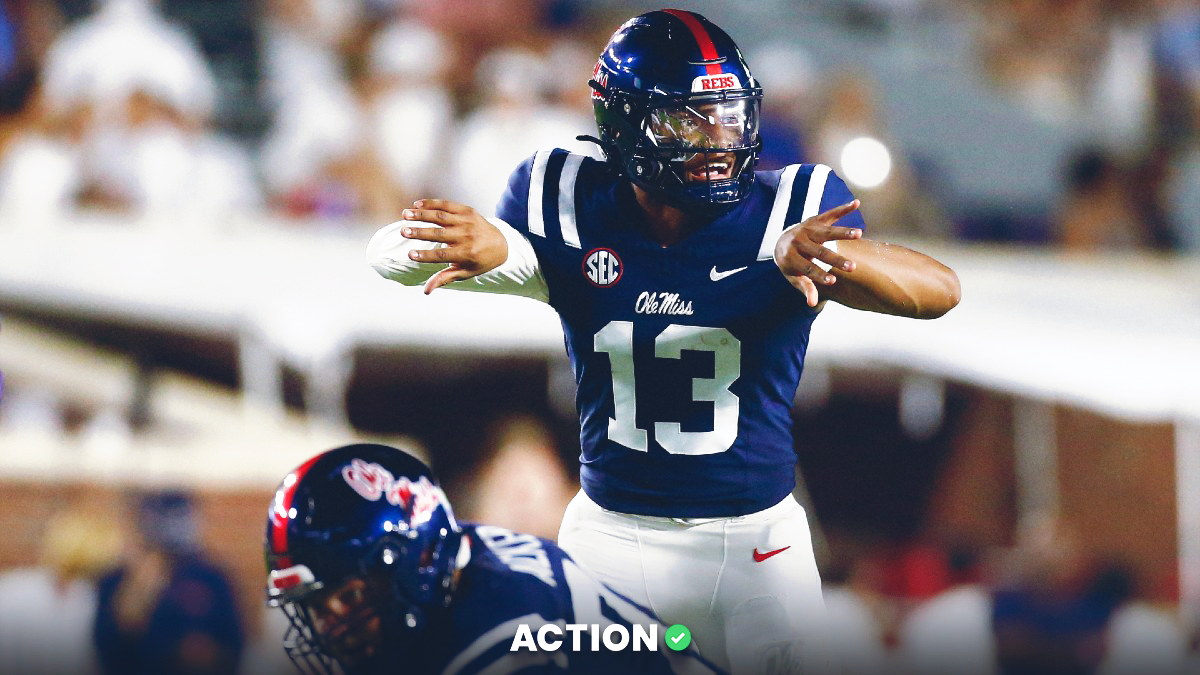We've all lived through enough bad beats to understand that the final score does not always do the best job of reflecting each team's performance. This weekly column highlights matchups where the advanced box score tells a different story than the game's result, as well as interesting data points that stick out from certain games.
Sports bettors may want to keep this information in the back of their minds before placing next week's college football wagers.
| Check out our new NCAAF PRO Report, where we highlight factors that provide betting edges — like large wagers, historically profitable betting systems, model projections and expert picks — that when combined with sharp money can powerfully detail the smartest bets on a given slate. |
Confounding Conclusions
Oklahoma State 20, Kansas State 18
After Oklahoma State left its last game with a loss despite dominating the box score, its luck turned here in a game that should have been won pretty easily by Kansas State.
According to College Football Data's postgame win expectancy metric, the box score pointed to a 97% win expectancy for Kansas State. The Wildcats limited Oklahoma State to a 29% success rate, while posting a 40% success rate themselves.
There were only five teams that had a lower success rate than the Cowboys in Week 10. One was an FCS team, and three others had games that were so lopsided they went into garbage time before the offenses were able to run 50 plays.
In terms of total yards, Oklahoma State was outgained by 110. However, the Cowboys were able to win the turnover battle, 2-0.
Kent State 27, Eastern Michigan 23
Kent State definitely played better than its 4-point victory would indicate.
The Flashes had over 130 more yards than their opponent, as well as a yards per play margin of 1.4 (5.9 to 4.5). They were very efficient against the run, holding EMU to 1.9 yards per carry on 32 attempts. In terms of success rate, Kent State also held a sizable edge. The Flashes were successful on 53% of plays compared to just 41% for Eastern Michigan.
Mississippi State 24, Vanderbilt 17
So Vanderbilt… outplayed an SEC opponent?
The Commodores held Mississippi State to only 204 yards on 3.6 yards per play. Vanderbilt, on the other hand, put up 478 offensive yards and 5.8 yards per play. It's not often that you lose a game with a yards per play margin of 2.2. In addition, Vanderbilt crossed the opponent 40-yard line nine times, while Mississippi State only did it six times.
But even when Vanderbilt managed to outplay its opponent, it still found ways to shoot itself in the foot. The Commodores threw three interceptions and coughed up two fumbles, for a -5 turnover differential. The fact that Mike Leach's offense was unable to find any efficiency against the SEC's doormat is very concerning.
TCU 34, Texas Tech 18
TCU only posted a 29% offensive success rate, which ranked as the seventh-worst of the week. Texas Tech was not much better, at 32%.
TCU, however, definitely benefitted from an average starting field position of its own 40. TCU had 13 offensive drives, and only three of them gained more than 50 yards. In total, TCU only had 32 more offensive yards than Texas Tech.
The Red Raiders also made one of the most confusing coaching decisions I have ever seen. On the TCU 19-yard line, down by 11 with 2:44 left, they decided to kick a field goal. That doesn't sound too out of the ordinary, until I mention that the field goal attempt was on second down with 4 yards to go. The football gods clearly weren't having it, and Texas Tech missed the kick.
TCU deserved a win, but its play did not reflect a 16-point victory.
| Never Bet Alone: Download The Action Network App for live odds & scores, picks from experts & your friends, and live win probabilities on all your bets. |
Puzzling Point Totals
Coastal Carolina 23, South Alabama 6
A game that features 781 yards of total offense usually doesn't end up with a final point total in the 20s. Coastal Carolina put up 445 yards, while South Alabama chipped in 336 of its own.
However, each team was incredibly inefficient in opponent territory. Both teams had eight trips past the opponent 40-yard line, and neither averaged more than 3 points per opportunity. Coastal Carolina only averaged 2.88 points on its eight opportunities, while South Alabama was even worse, at 0.75 points per opportunity.
Oregon 35, Stanford 14
This over/under closed at 49, and over backers had to have been sick watching a push. The two teams combined to go 0-for-5 on field goals, with Stanford's kicker missing attempts from 48, 41, 35 and 27 yards.
Oregon's kicker must have felt bad for him, because he went and missed a 37-yard field goal in the fourth quarter. Both offenses were able to gain chunk plays at will, and each averaged more than 7 yards per play (7.2 for Stanford, 7.5 for Oregon). There were 909 total offensive yards, and 17 combined trips past the opponent 40-yard line.
College kickers, man.

















































